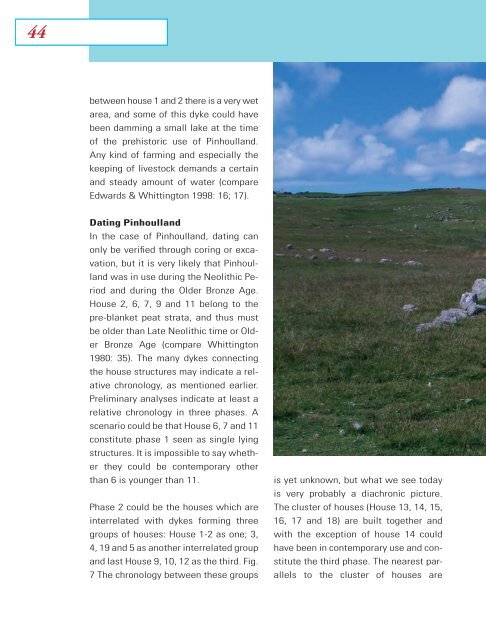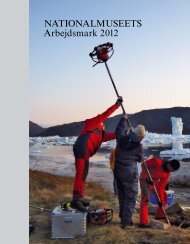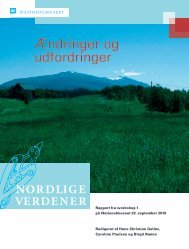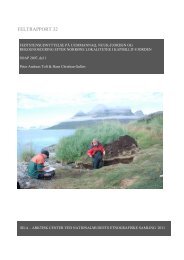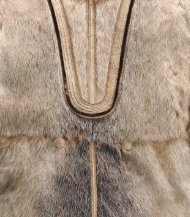The Border of Farming and the Cultural Markers - Nordlige Verdener
The Border of Farming and the Cultural Markers - Nordlige Verdener
The Border of Farming and the Cultural Markers - Nordlige Verdener
Create successful ePaper yourself
Turn your PDF publications into a flip-book with our unique Google optimized e-Paper software.
44<br />
between house 1 <strong>and</strong> 2 <strong>the</strong>re is a very wet<br />
area, <strong>and</strong> some <strong>of</strong> this dyke could have<br />
been damming a small lake at <strong>the</strong> time<br />
<strong>of</strong> <strong>the</strong> prehistoric use <strong>of</strong> Pinhoull<strong>and</strong>.<br />
Any kind <strong>of</strong> farming <strong>and</strong> especially <strong>the</strong><br />
keeping <strong>of</strong> livestock dem<strong>and</strong>s a certain<br />
<strong>and</strong> steady amount <strong>of</strong> water (compare<br />
Edwards & Whittington 1998: 16; 17).<br />
Dating Pinhoull<strong>and</strong><br />
In <strong>the</strong> case <strong>of</strong> Pinhoull<strong>and</strong>, dating can<br />
only be verified through coring or excavation,<br />
but it is very likely that Pinhoull<strong>and</strong><br />
was in use during <strong>the</strong> Neolithic Period<br />
<strong>and</strong> during <strong>the</strong> Older Bronze Age.<br />
House 2, 6, 7, 9 <strong>and</strong> 11 belong to <strong>the</strong><br />
pre-blanket peat strata, <strong>and</strong> thus must<br />
be older than Late Neolithic time or Older<br />
Bronze Age (compare Whittington<br />
1980: 35). <strong>The</strong> many dykes connecting<br />
<strong>the</strong> house structures may indicate a relative<br />
chronology, as mentioned earlier.<br />
Preliminary analyses indicate at least a<br />
relative chronology in three phases. A<br />
scenario could be that House 6, 7 <strong>and</strong> 11<br />
constitute phase 1 seen as single lying<br />
structures. It is impossible to say whe<strong>the</strong>r<br />
<strong>the</strong>y could be contemporary o<strong>the</strong>r<br />
than 6 is younger than 11.<br />
Phase 2 could be <strong>the</strong> houses which are<br />
interrelated with dykes forming three<br />
groups <strong>of</strong> houses: House 1-2 as one; 3,<br />
4, 19 <strong>and</strong> 5 as ano<strong>the</strong>r interrelated group<br />
<strong>and</strong> last House 9, 10, 12 as <strong>the</strong> third. Fig.<br />
7 <strong>The</strong> chronology between <strong>the</strong>se groups<br />
is yet unknown, but what we see today<br />
is very probably a diachronic picture.<br />
<strong>The</strong> cluster <strong>of</strong> houses (House 13, 14, 15,<br />
16, 17 <strong>and</strong> 18) are built toge<strong>the</strong>r <strong>and</strong><br />
with <strong>the</strong> exception <strong>of</strong> house 14 could<br />
have been in contemporary use <strong>and</strong> constitute<br />
<strong>the</strong> third phase. <strong>The</strong> nearest parallels<br />
to <strong>the</strong> cluster <strong>of</strong> houses are


